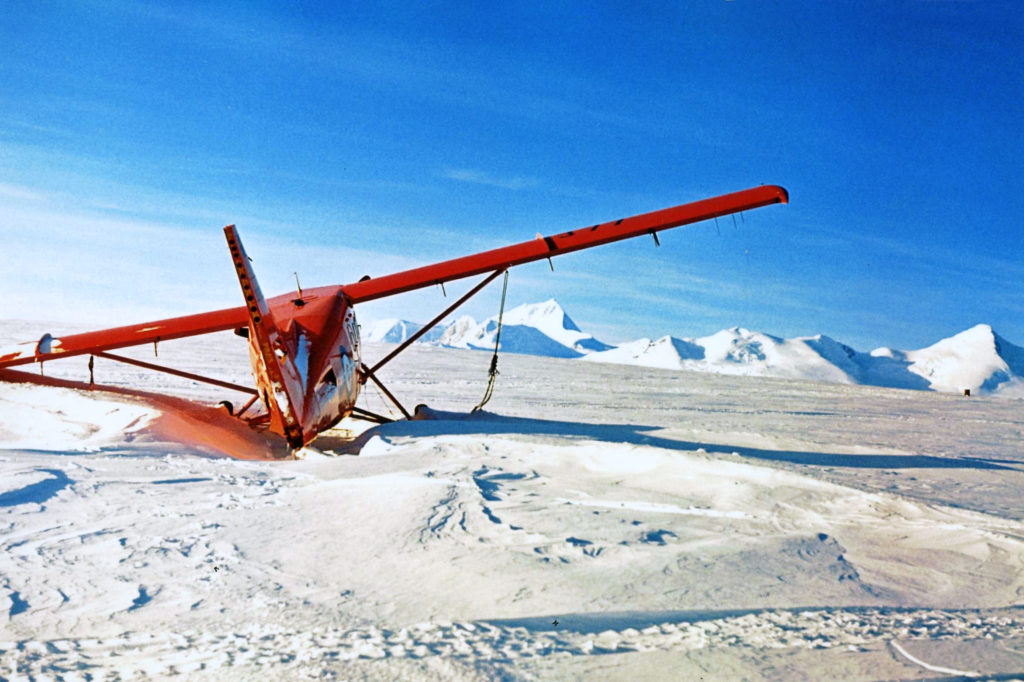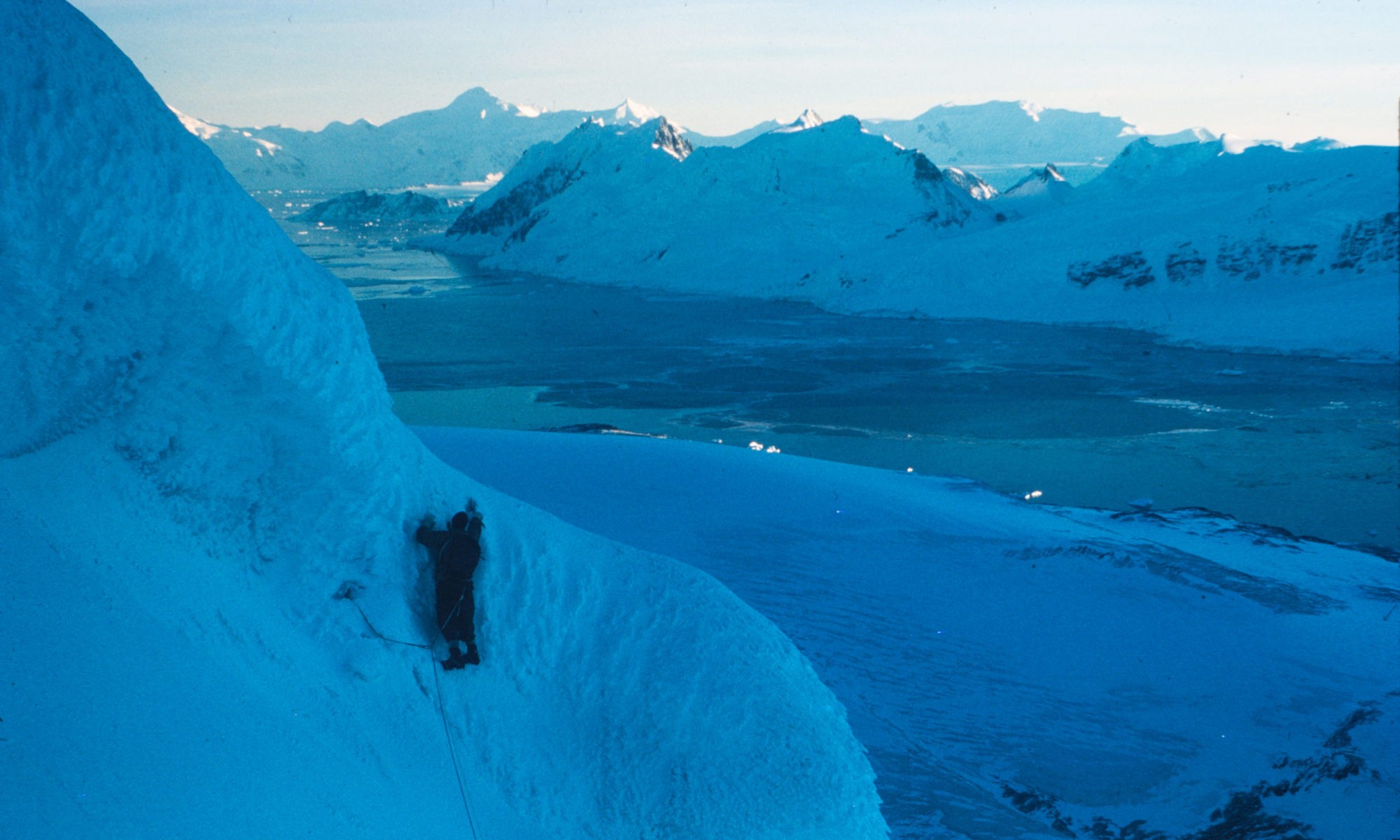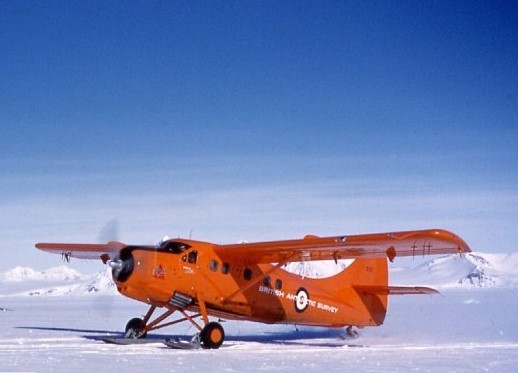VP-FAL De Haviland DHC-3 Otter c/n 377
VP-FAL at Adelaide (Photo: David Bridgen)
Bought new from DHC by FIDS (to replace Beaver VP-FAJ) and painted in error as VP-FAL (no regn had been allocated to it and VP-FAL had been reserved for future FIGAS use). In its overall ‘International Orange’ colour scheme, it first flew at Downsview July 29th, 1960 with subsequent test flights on August 26th, 1960 and November 17/18th, 1960. On November 11th, 1960, it was dismantled, inhibited and packed for shipping to the Antarctic.
It is believed to have been taken initially to Montevideo, Uruguay, before being collected by ‘Kista Dan’ which had departed from Southampton for Deception Island, South Shetlands, where it arrived on January 11th, 1961.
The aircraft was unloaded, assembled, fitted with wheels/skis and then test-flown on January 21, 1961. (From then until December 1967 the aircraft was normally based at Adelaide Base on Adelaide Island for FIDS/BAS support flights during the summer months, returning to Deception Island each winter for maintenance and storage. (Note: During the 1961 winter it was kept in open storage as the hangar was not completed until March 1962).
Ownership of the aircraft changed from FIDS to BAS on January 1, 1962 and on January 3rd, 1962 a FI Registration Certificate was issued declaring it to be VP-FAJ (a re-issue of the Beaver Registration). The aircraft remained marked as VP-FAL until it was painted in BAS livery (to comply with the creation of British Antarctic Territory on January 3rd, 1962). The new colour-scheme included removal of the registration and application of its c/n as an identity (in black on the fin and underside of the port wing at least).

The aircraft remained marked like that until December 28th, 1964 when the tail-ski was ripped off, the undercarriage struts driven up through the airframe and the rear fuselage twisted in a landing accident at Adelaide. The pilot (Flt Lt E.J.Skinner) was unhurt but the aircraft, which had fallen some 30ft into a dip in the snow and ice not seen from the air, was deemed to be “beyond economical repair” and SOC (Struck off Charge).
The new colour scheme of March 1962 included wearing the “Bas(s)” ‘Red Label’ ale motif (minus, for obvious reasons, the last ‘s’) on the port engine cowling, at least.

